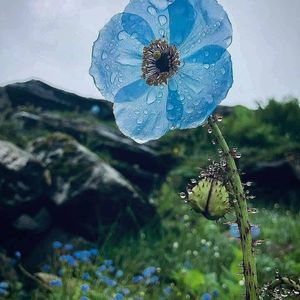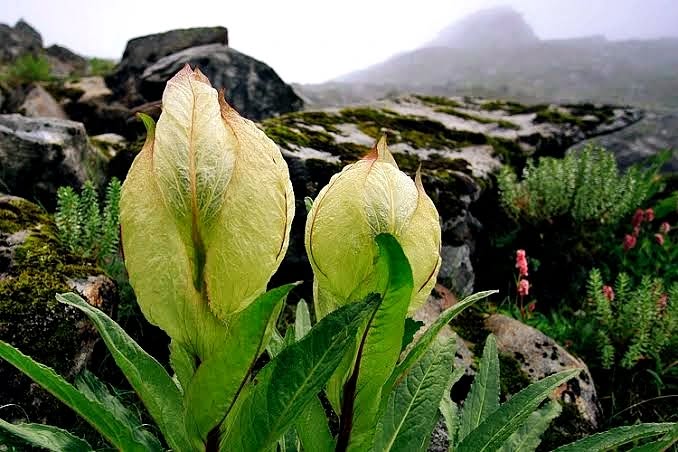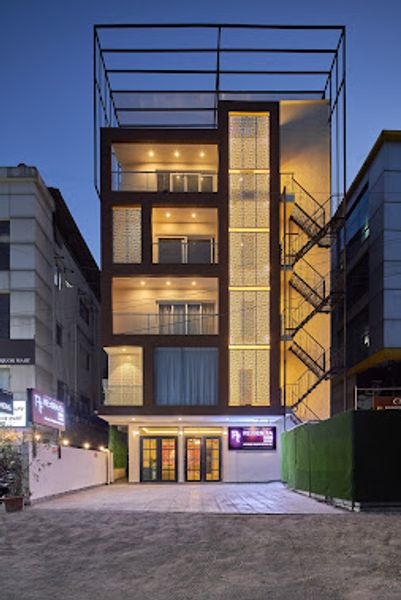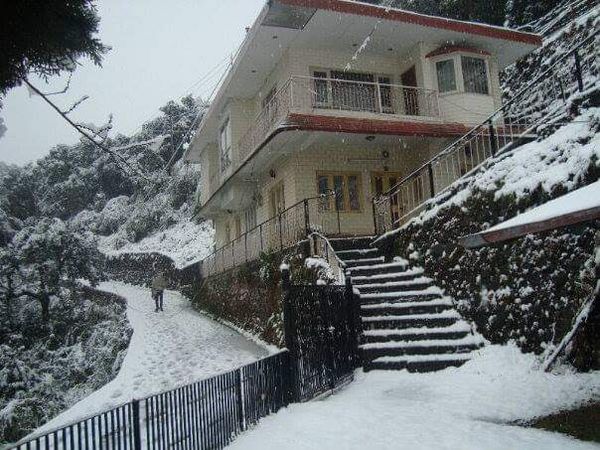In Bloom: Most Beautiful Flower Species You Can Spot in Valley of Flowers
 Ashish Rawat
31 Jul, 2025
10 mins read
42
Ashish Rawat
31 Jul, 2025
10 mins read
42

Nestled in the lap of the Himalayas, the Valley of Flowers is a peaceful retreat for those who love nature. This national park in Uttarakhand, India, turns into a sea of colors every year during the monsoon. Covered with rare and stunning blossoms, it becomes one of the most beautiful places to witness nature’s magic. If you are planning to visit, here are some of the most beautiful flower species you can see in the Valley of Flowers.
Himalayan Blue Poppy – A Rare Beauty in the Valley of Flowers
The Himalayan Blue Poppy is often called the queen of Himalayan flowers. With its soft blue petals and golden center, it stands out against the green hills. This rare flower grows in cool, moist areas and blooms during July and August. It is delicate and doesn't survive in harsh sunlight, so spotting one is a real treat for trekkers and nature lovers.
These poppies are not just beautiful but also symbolic. Locals believe the flower brings peace and good energy. Since it's not found easily elsewhere, many visitors to the valley hope to see this special bloom.
Brahma Kamal – The Sacred Blossom of the Himalayas
Another stunning flower in the Valley of Flowers is the Brahma Kamal. It grows at high altitudes and is mostly seen in the upper areas of the valley. What makes this flower special is not just its beauty but its importance in Indian culture. Named after Lord Brahma, the creator in Hindu mythology, the Brahma Kamal is considered sacred.
Its white petals bloom after sunset and stay open only for a short time. If you're lucky enough to catch one in full bloom, it's truly a magical sight. Because of its spiritual meaning and rare appearance, many trekkers consider it the highlight of their visit.

Cobra Lily – Nature’s Unique Design
The Cobra Lily, also known as Arisaema, is one of the most interesting flowers in the valley. Shaped like a cobra's hood, it gets its name from its appearance. This wild plant grows under trees and in shaded areas. While its look might be a little strange to some, it plays an important role in the valley’s ecosystem.
The Cobra Lily blooms during the early monsoon and often surprises visitors with its unique form. It shows how creative nature can be, turning even the simplest shapes into something beautiful.
Himalayan Bellflower – A Touch of Soft Purple
The Himalayan Bellflower, or Campanula, adds a soft charm to the valley. These small purple flowers often grow in groups and gently sway with the mountain breeze. Found along the trekking trails, they are easy to spot and make perfect photo moments.
These bell-shaped blooms appear in mid to late monsoon and cover large patches of land. Their peaceful look makes them a favorite among photographers and those looking for quiet time in nature.
Marigold – The Burst of Bright Yellow and Orange
While marigolds are more common in gardens, they also grow wild in the Valley of Flowers. Their strong scent and bright colors bring a cheerful vibe to the landscape. You’ll mostly see them near the lower sections of the trail and near village farms.
Marigolds are known for their healing properties and are often used by locals for traditional medicines. Though they may seem familiar, seeing them growing naturally in a wild valley is a new experience.
Anemone – The Star-Shaped Wildflower
Anemones are star-shaped flowers that come in different colors like white, blue, and pink. They are usually found on slopes and in open meadows. Their soft look and fragile petals make them stand out among the grass.
In the Valley of Flowers, anemones bloom in early monsoon and stay for a few weeks. They grow in groups and can cover large patches of land. Trekkers often pause to admire their neat, star-like shape and calm colors.
Primula – The Carpet of Color
Primulas are another highlight of the valley. These tiny, colorful flowers grow in dense groups and form what looks like a carpet on the ground. They bloom in shades of red, purple, yellow, and white.
They are easy to spot along the trek path and are often the first flowers to bloom during the season. Because they grow close to the ground, you’ll notice them right at your feet. The primula patches are especially lovely on cloudy days when the light is soft.
Dactylorhiza Hatagirea – The Hidden Medicinal Treasure
This might not be the most eye-catching flower, but Dactylorhiza Hatagirea is one of the most important species in the valley. It is known for its use in Ayurvedic medicine and grows at higher altitudes. It has purple flowers with long green leaves and is usually found in moist areas.
Because of its medicinal value, this flower is now protected, and picking it is not allowed. Still, just seeing it in its natural space is worth the effort. It reminds visitors that the valley is not just beautiful but also full of life-giving plants.
Pedicularis – The Feather-Like Flower
Pedicularis is another flower that adds charm to the valley. It comes in many shapes and colors, but the most common one has feather-like petals in pink or purple shades. These flowers grow in clusters and often surprise trekkers with their soft beauty.
They are found in middle and upper parts of the valley and bloom between July and September. Pedicularis adds a wild, almost untouched feel to the valley’s look.
When Is the Best Time to Visit the Valley of Flowers
The Valley of Flowers is open from June to early October, but the best time to visit is from mid-July to August. This is when most of the flowers are in full bloom, and the weather is cool and pleasant. The trek to reach the valley is around 10 kilometers from Govindghat, but it's not too hard. Even beginners can enjoy it.
To fully enjoy the valley, start your trek early in the morning and carry simple things like water, snacks, and a raincoat. Don’t forget to carry a camera, but also take time to look around without it. Some moments are best felt, not just clicked.
Final Thoughts
The Valley of Flowers is a peaceful and colorful escape from the noise of daily life. With every step, you’ll see something new, from the rare Himalayan Blue Poppy to the gentle bellflower. It’s not just about flowers it’s about the calm, the clean air, and the feeling of being close to nature.
Whether you're a plant lover or someone who just enjoys a good walk with a great view, this valley has something for you. The flowers here don’t just grow they bloom with life, color, and peace.
Written By:
Ashish Rawat



Hotels at your convenience
Now choose your stay according to your preference. From finding a place for your dream destination or a mere weekend getaway to business accommodations or brief stay, we have got you covered. Explore hotels as per your mood.


